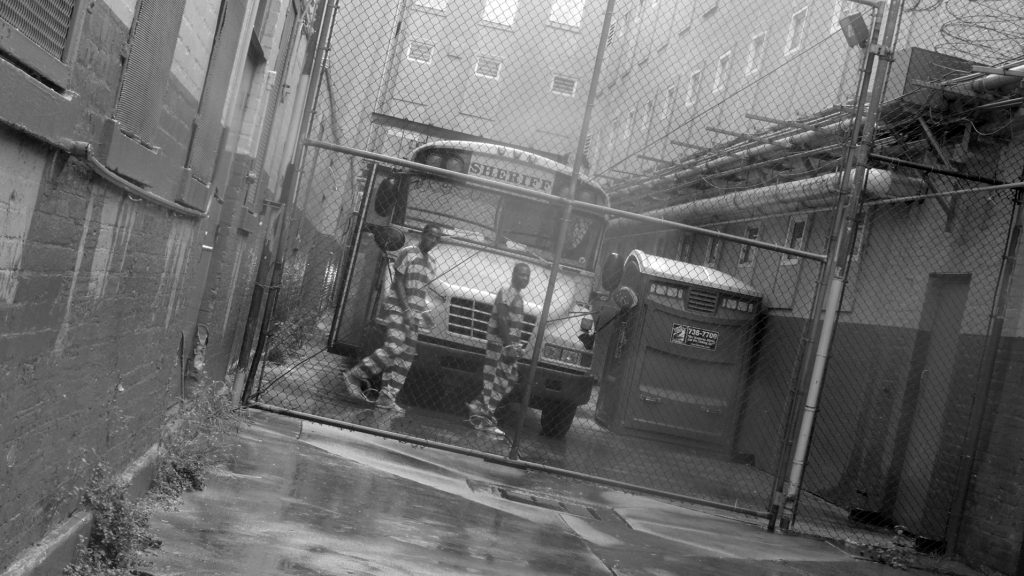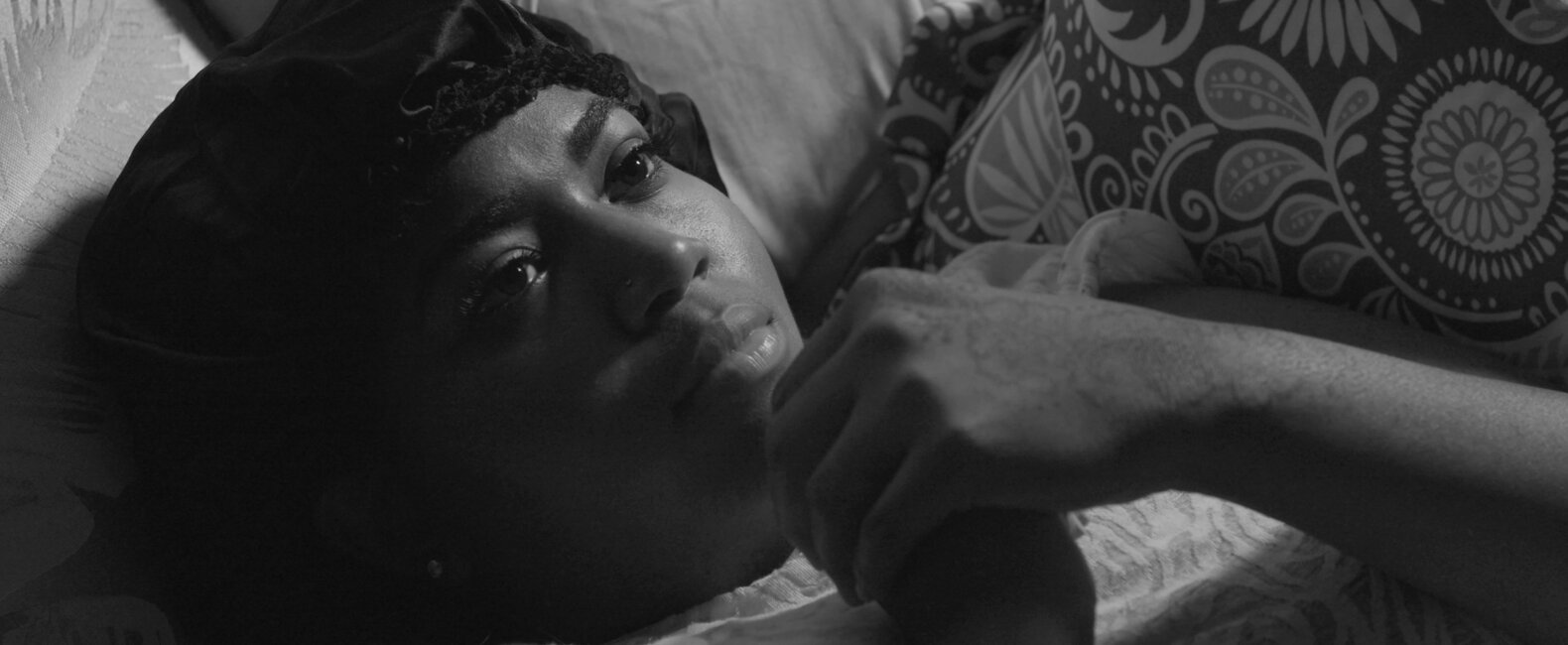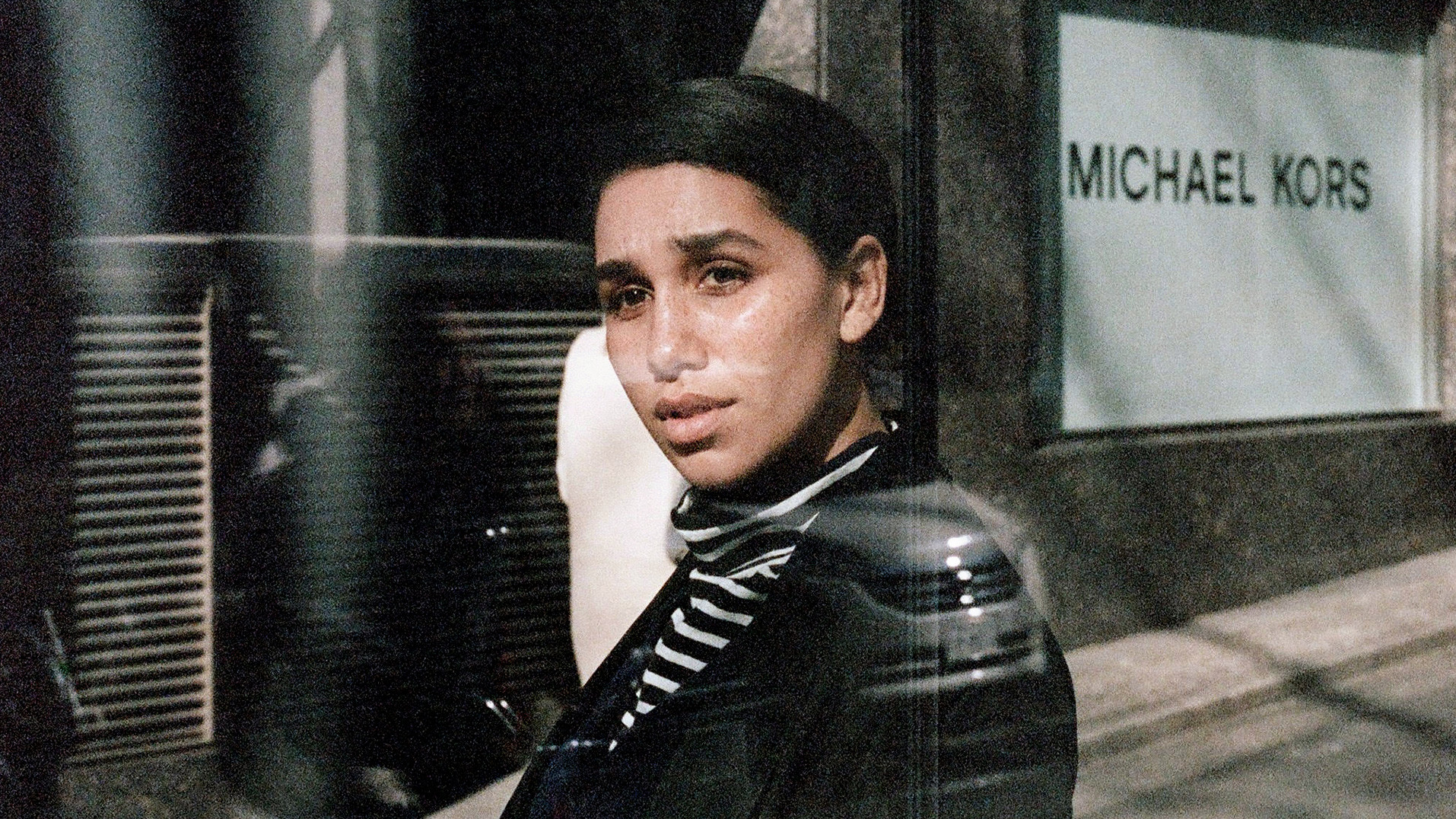Documentaries excel when they don’t hold back, when they give an “unmitigated” perspective on someone’s life, as director Garrett Bradley puts it. That’s exactly how she managed to make an incredibly specific story relate on such a broad level, by telling a story in its entirety. Because, when you get below the surface-level details, great documentaries remind us that our stories aren’t as unique as we may have thought in the first place.
Take her latest short film, Alone (a New York Times Op-Doc), a film that explores the relationship between an incarcerated man, Desmond, and his girlfriend — a woman named (almost unbelievably) Aloné. The film is specific and, at the same time, universal: a study in loneliness and alone-ness within the context of the American penitentiary system. It’s extremely calculated and intentional, but with moments that feel as if they’re unraveling before your eyes.
We had the chance to talk to Garrett about how she captured this heartbreaking story with respect, and why the distinction between journalism and documentaries isn’t all that important — if they’re done the right way.
How did you meet Desmond and Aloné?
I was just out of graduate school, and I met Desmond and Aloné while making my first feature-length film, Below Dreams. I shot it in New Orleans and cast the entire film off Craigslist. I’m from New York, not New Orleans. But, after Below Dreams premiered at Tribeca, I stayed in New Orleans and built relationships with a lot of the people I’d worked with.
How come you’ve set so many of your projects in New Orleans?
I’ve shot a lot of them — including Alone — in New Orleans because I consider the South, and New Orleans in particular, to be the genesis of our country, and our culture, as Americans. For better or worse, it’s rooted in tradition. It’s committed to staying the same and resisting change. For a filmmaker, that presents a lot of interesting opportunities to explore our past and our history, and to use that as a way of understanding where we are right now. That can be a lot harder to do in cities like New York or Los Angeles, where there’s more of an emphasis on innovating the future.
What drew you to the story of Alone?
I was struck by the reality of being in a relationship with someone who’d been imprisoned. We have these generalized ideas about what it means to get arrested, but the actuality is very different. Aloné became a single mother overnight. Desmond became a missing person overnight. A missing person to his employer, his children, his girlfriend, anyone he had contact with. It’s the same story for a minimum of 4.4 million people in this country, and I felt that was a really important story for people to understand. A lot of people can relate, even if they’re not going through this same situation.
Part of the reason this story was important to me was because it made me think about my own experience as a woman going through a breakup with someone I loved but couldn’t be with. I understand that personal struggle with loneliness. To see Aloné going through the same thing really struck a chord with me. In addition to having a personal connection to her and Desmond, I also felt that being in love with someone you couldn’t see or touch or be with was something a lot of people could relate to as well, despite the trappings of the individual situations. Loneliness is universal in that sense and, when addressed in a public space, I believe it can bring people together across all backgrounds.

Is Aloné’s story unique?
No. The opposite, actually. It’s very common. That’s what’s so important about it. The unique part was I knew her. I had access. She trusted me to tell her story. But there are millions of other women going through the same situation and they’re going through it with the same amount of grace. I believe it’s a unifying experience that can bring people together.
How do you craft a story that’s both specific and connects with an audience?
Well, I think you can tell from the footage that my style isn’t just going into a situation and following a subject throughout the course of a day. I spend a lot of time beforehand thinking about the message I’m trying to share with the world. What key elements of a person’s life are going to speak to a broader issue? What specific details can I focus on — in this room, in this neighborhood, in this life — that are going to feed into a more global experience?
The essence of this story, which Aloné and I determined together, was what it feels like to be alone and what it means to fight against it. A huge percentage of our country feels that. So if we illustrate her experiences — the specific details of her experiences — we’re actually making a more universal space for other people to feel connected to it.
Those details are important. I believe showing the fullness of someone’s life — the multiple dimensions of someone’s personality and emotional landscape — is the closest we can get to reality. I thought it was important that we see what Aloné does for a living, how she found a support network in a church, how she lets off steam. It’s really important to illustrate the totality of experience.
Do you see Alone as a documentary or a piece of journalism?
You know what, that’s actually a large and very essential conversation. What is the distinction between journalism and documentary? What are the defining lines? Unfortunately, I believe a lot of people confuse the two based purely on aesthetics. They think if a piece looks sort of rough and immediate then it’s journalism; if it looks crafted, it’s a documentary. But I believe the two can meet one another. They should be made in the same posture, which is telling the truth — not mitigating your subjects or your story, but working from a transparent standard of ethics.
Did working on this piece change the way you think about making films in any way?
I’ve thought a lot about audience, about who the work does and doesn’t reach. I’ve thought about how the industry I work in is somewhat of an elite space and how, knowing this, we should be honest with ourselves as filmmakers about why we do what we do and who it’s really for. How can we push the field we work in to think more inclusively about the way we advertise, market, and distribute a film?
We’re living in a world where there’s this opportunity for self-making, self-identifying, self-describing; and I believe that same thing applies to the way we make films. The way we make art. We don’t have to limit ourselves to genres or categories. The fundamental nature of this work is the process. The ethics. The ways we work with other people. When you are framing a person or a community which exists in the world, there is in my opinion a set of criteria a filmmaker must keep in mind which maintains an alignment with what is simply fair. Fair to those allowing you into their lives and fair to the audiences watching the film. Beyond that, I don’t think you need to worry much about labels. And that opens doors creatively. The more we can experiment with that idea, the more our culture will be reflected in the work, and the more our work will outlast us.


















































































